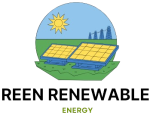Switching to solar power is a great way to reduce electricity costs and embrace a more sustainable lifestyle. However, with so many options available, choosing the right solar system for your home can feel overwhelming. Understanding your energy needs, budget, and available space can help you make an informed decision. Here’s a step-by-step guide to selecting the best solar system for your home.
1. Assess Your Energy Needs
Before choosing a solar system, it’s important to understand how much energy your household uses. Reviewing past electricity bills can give you an idea of your average monthly consumption. A system that generates enough power to meet your needs will maximize your savings and efficiency.
2. Decide Between Grid-Tied, Off-Grid, or Hybrid Systems
There are three main types of solar systems to consider:
- Grid-Tied Solar Systems – These systems are connected to the electricity grid and allow you to use solar power while still having access to traditional energy when needed. They are the most common and cost-effective option.
- Off-Grid Solar Systems – Designed for complete energy independence, off-grid systems rely on battery storage to provide power when the sun isn’t shining. These are ideal for remote areas or homeowners looking to be fully self-sufficient.
- Hybrid Solar Systems – A combination of grid-tied and off-grid systems, hybrids use battery storage while remaining connected to the grid. This setup provides backup power during outages and greater control over energy usage.
3. Consider Available Roof Space and Sunlight Exposure
Your roof’s size, angle, and shading affect how much solar energy you can generate. A roof with clear sun exposure throughout the day is ideal for maximum efficiency. If your roof has limited space or shading issues, ground-mounted solar panels may be an alternative solution.
4. Choose the Right Solar Panel Type
Solar panels come in different types, each with unique advantages:
- Monocrystalline Panels – Known for their high efficiency and sleek design, these panels perform well in limited space.
- Polycrystalline Panels – A more budget-friendly option with slightly lower efficiency, but still a great choice for many homes.
- Thin-Film Panels – Lightweight and flexible, these panels work well for unique installations but may require more space.
5. Factor in Battery Storage Options
If you want backup power for nighttime use or outages, consider adding a solar battery. Battery storage allows you to store excess energy generated during the day and use it when needed, reducing reliance on the grid.
6. Look at Long-Term Benefits and Warranty Coverage
Investing in high-quality solar panels with a strong warranty ensures long-term performance. Most solar panels last 25 years or more, making them a durable and reliable energy solution. Checking warranty details on both panels and inverters helps protect your investment.
Make the Switch to Solar Today
Choosing the right solar system doesn’t have to be complicated. By understanding your energy needs and exploring different options, you can find the perfect solution for your home. At Reen Renewable Energy, we’re here to help you every step of the way. Contact us today to start your solar journey!

